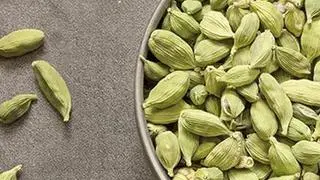Global agricultural commodity prices are currently trading at elevated levels for a combination of reasons including inclement weather, ultra-accommodative monetary policy and not the least, geopolitics through the crude oil route. The market has rallied for the past eight months or so.
Corn (maize), cocoa, cotton, soyabean, palm oil and others are trading at multi-year highs due to supply shortfall caused by La Nina weather impact, especially in South America and parts of Europe.
Rising crude oil market (Brent near $70 a barrel) is another driving factor as higher energy prices push the cost of mechanised farming higher, raise processing costs as well as ocean freight and incentivise discretionary blending for bio-fuels.
Additionally, disruption to global supply chains caused by the pandemic over the last 12 months is seen encouraging food deficit countries to build inventory. This heady mix has been exacerbated by flow of speculative capital in the bourses which exerts an exaggerated impact on prices.
No supercycle phase
No wonder, globally, agri-commodity prices are currently trading at multi-year highs. This has once again prompted the talks whether the agri-markets have entered a super cycle. On current reckoning, a super cycle in the global agri-markets is most unlikely. We have seen this before. Elevated price levels of the years 2010 to 2012 caused by easy money, high crude oil rates, bad weather and speculative capital gave way to expansion in production and falling market prices in the years that followed.
Clearly, more often than not, it is the supply side, rather than the demand side, that drives the market. This time it is no different with tight supplies. Under normal conditions, we have seen agriculture output grow faster than demand growth, except under abnormal weather conditions.
Price & production
Again, the functional relationship between price and farm production is well recognised, especially in western economies. As farm production is a function of price, the current high prices are sure to encourage growers around the world to expand acreage, improve agronomic practices and harvest larger crops in the months ahead.
In the northern hemisphere (USA, Canada, Europe, Asia), seeding is expected to commence in the weeks ahead. Planted area for major grains and oilseeds is set for an expansion. By August, the world will have a fairy good idea about the likely harvest size which in turn will start to pressure prices down. It would be reasonable to expect higher production of grains (wheat, corn) and oilseeds (soyabean, palm oil).
In our country, the Rabi crop (wheat, pulses, oilseeds) prospects are quite satisfactory. Higher global prices may lend some firmness to domestic prices; but also open up opportunities for export, for instance of wheat. Importantly, it would send a positive signal to growers for the upcoming Kharif season planting.
The year 2021 will be a year of two halves with the first half witnessing firm prices and the second half softer rates. The supply response to prices will be evident.
The author is a policy commentator and agri-business specialist. Views are personal







Comments
Comments have to be in English, and in full sentences. They cannot be abusive or personal. Please abide by our community guidelines for posting your comments.
We have migrated to a new commenting platform. If you are already a registered user of TheHindu Businessline and logged in, you may continue to engage with our articles. If you do not have an account please register and login to post comments. Users can access their older comments by logging into their accounts on Vuukle.